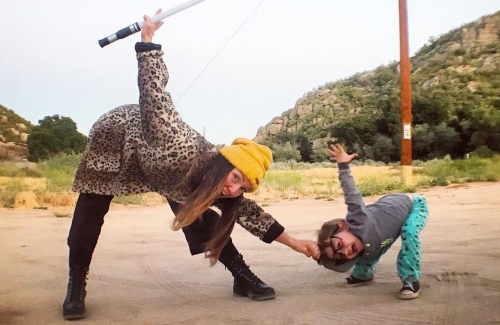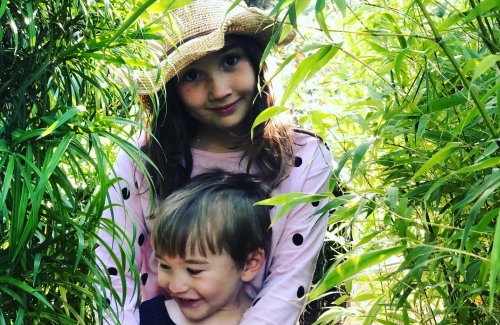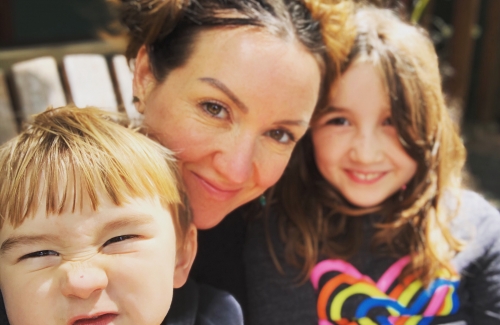I Hear You: How to Model Empathy at Home

This blog post is adapted from a presentation by Marie McDonald, Galileo’s VP of Communications & Southern California Operations. You can watch the full video here or check out the related posts for more on raising empathetic kids.
—
Have you ever been in the middle of a disagreement, an argument, or a challenging conversation, and suddenly realized that there are only two possible ways forward?
You can choose to continue to try to get your point across and make the other person understand you, which will likely lead to more ping pong.
Or, you can choose to let go and listen. You might get a chance to share eventually, and you might not.
You might end up listening to a perspective that is the exact opposite of yours. It can be so hard to do, but on the other side of that challenge is the potential for connection; learning; and mind-expanding, perspective-building, a-ha moments. The magic of it all is that when you’re done listening, your experience is still right there, just as valid and true as it was when you started.
To empathize, we must first understand that multiple truths exist simultaneously. We can put our viewpoint aside temporarily and listen with a full heart to someone, trying to understand what it’s like for them, while also knowing that what we experienced is true too—even if it’s entirely different.
This is the art of learning to walk in someone else’s shoes, and the first way we teach our kids how to do it is to model it ourselves. Here are some ways to teach empathy through how we speak, act, react, and relate in our own homes and family spaces.
Narrate what you are doing.
When we speak aloud the steps we’re taking and talk through what we’re doing, our kids not only learn practical life skills, but we also show them a different human’s perspective.
It might feel pretty wacky to narrate yourself, but it’s as easy as this: talk through the steps in your head, out loud. While making dinner, for example, that might include the ways you’re thinking about necessary materials or talking through your process and timing. In doing this, you’re teaching real skills like how to make a meal, while also providing an opportunity for your kids to build empathy as they learn how much work and care you and others put into the food they eat.
Reflect on your roses and thorns.
The more you do it, the more valuable this nightly tradition becomes. If your family has dinner together regularly, during or after your nightly meal is a great time for Roses and Thorns.
Here’s how: circle the table and ask each family member to share something from their day that was hard (a thorn) and something that brought them joy (a rose). Understanding the things that are important to each family member helps everyone to learn about what’s similar and what’s different in how we experience the world.
Let them see you process emotions.
When you have an emotional reaction, consider talking through it.
- How are you feeling the emotion?
- Are you allowing it to be there without judgment?
- What information are you taking from the feeling?
- What will you do with that information as you choose to act?
- How are you calming yourself?
If the emotion is a challenging one, that might sound like:
“Wow, am I frustrated about the phone call that I just had. I’m going to sit down and let myself feel it for a minute because I just got some news that feels really hard for me. I’m going to take a couple of deep breaths and ask your dad for a hug when he gets home. Then I’m going to take a bath and get some good sleep tonight so that I can think about this again in the morning with a fresh perspective.”
If you’re soaking up the joy of life, say that out loud too! This helps your kids to be present, notice and enjoy the daily joys of living, and practice gratitude. Soon, you might hear them parroting back some of these phrases. That might sound like:
- “It’s so nice to be sitting here, eating dinner outside with all of you.”
- “Even though today had tough parts, I’m so glad I got to spend a lot of time with you.”
- “This walk is just what I needed. I’m so glad we chose to do this.”
Show curiosity about other ways of living.
Sooner or later, our kids often end up caring about what we care about. Show them that you care about people that look different than you. In my family, for example, we experiment with recipes and listen to music from around the world, and we read books from and about different cultures.
Encourage curiosity as our kids ask questions about the things they see in the world around them. If they ask about the economic differences, skin color, clothing or practices of the people that they see in the world, we can teach empathy by entering into those conversations with an open mind. We can model that it’s okay to ask, talk, and learn about other life experiences and ways of living. In my family, we involve our kids in age-appropriate ways as we learn together about race, privilege, and activism.
Own your mistakes.
When we make a mistake, we can model empathy by talking about what happened and what we learned from the experience. When we do this, we’re modeling how to deal with failure in a productive way and how to respond compassionately to the mistakes that the people around us make. Later in life, this will help them own their own mistakes.
For example, when we break a dish that we love or make a bigger mistake in life we can say things like, “Well, I sure didn’t do that the way I planned. I did learn from it though, and everyone makes mistakes!”
We can also practice this when we overreact, lose our patience, or otherwise make a mistake in how we react to our kids. We can do this by saying, “Hey, I didn’t’ act the way I wanted to. I’m sorry that I lost my patience. I made a mistake. I’m going to work hard to do that differently next time. How does that sound to you?”
Care out loud.
The language we choose to use in front of our families teaches our kids how to relate to others. We can model empathy in how we talk about current events and by speaking about others with respect even when we don’t agree with their opinions.
When we talk to other adults about the lives and choices of family and friends, our kids hear it. We can model empathy by showing respect in the words we choose, even when we don’t think our kids are listening. Most importantly, we can speak with respect and the desire to learn about people that we encounter from other political ideologies, family value systems, cultural traditions, and belief systems. This even matters when we’re talking about the different ways our family units approach things. It all matters.
Involve kids in actively caring for others.
We can help our kids to care about others by doing small things based on what we know our loved ones value, and doing them in ways our kids can see. Even better: get the kids in on the actions. This might sound like:
- “I made this coffee exactly the way your dad likes it, it’s going to make him feel great this morning because I know he didn’t sleep well. Could you bring it to him and give him an extra hug?”
- “Your uncle had a hard week. What do you think we could make and drop on his front porch to cheer him up?”
- “I’d like to make and carry bags in our car so that we can give them to the people we see on sidewalks in our city, holding signs that say they need help. What do you think we should put in those bags?”
We can be the first ones to listen to really understand. We can do it even when it’s hard, and we can do it in front of our kids.
We can do it, and they can too.
Look out for our next installment of this four-part series, which will focus on how to teach and practice empathy with kids at home. It will focus on active listening skills, communication and conflict resolution. Until next time!
—
Sarah McDonald is Galileo’s VP of Southern California Operations. When she’s not heading up camp operations, Sarah loves to write, paint, and adventure with her fam.

 Building a Case for Empathy
Building a Case for Empathy  I See You: 6 Ways to Teach Kids Empathy
I See You: 6 Ways to Teach Kids Empathy  Parenting with Levity: How to Gamify Empathy Lessons
Parenting with Levity: How to Gamify Empathy Lessons 